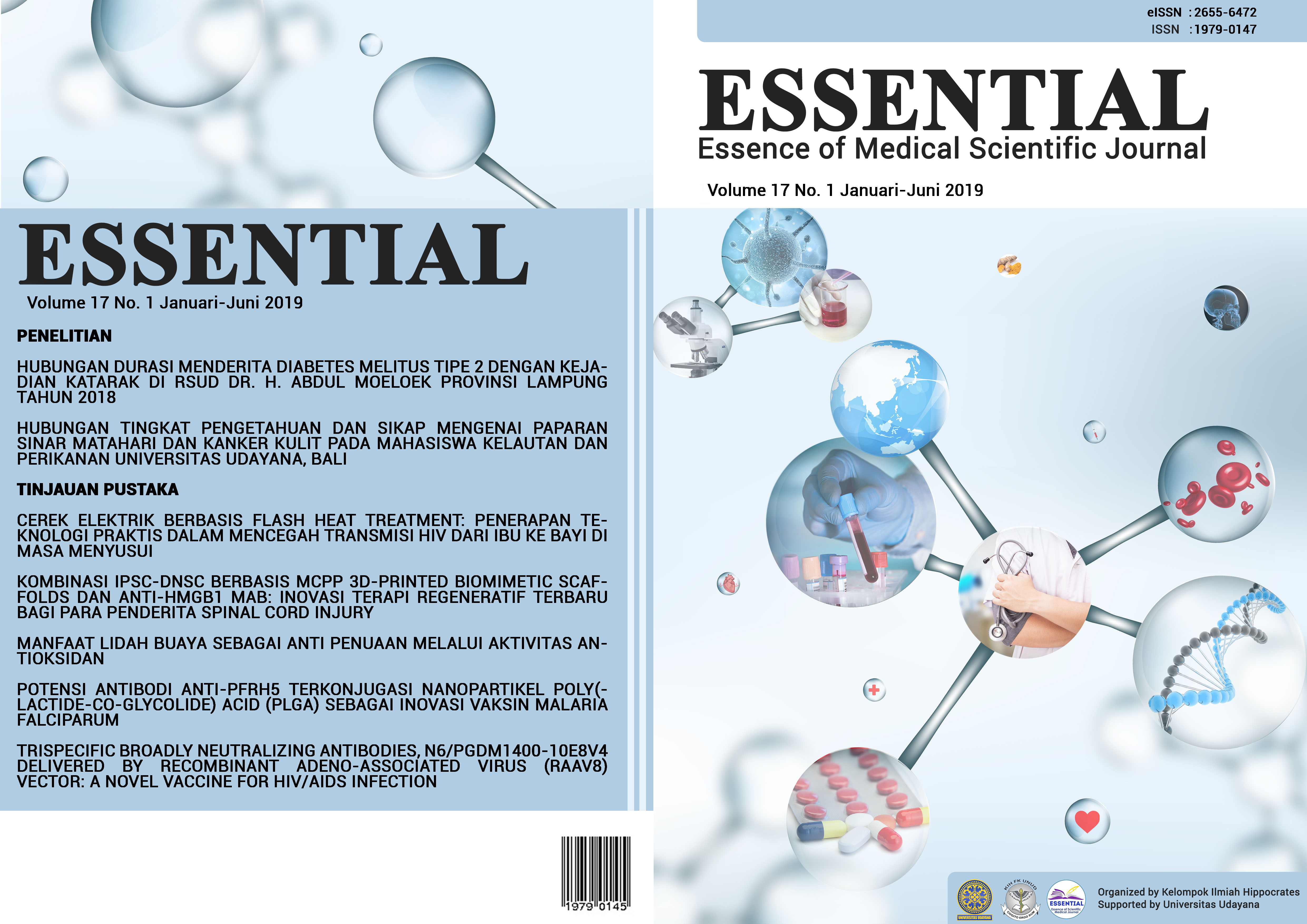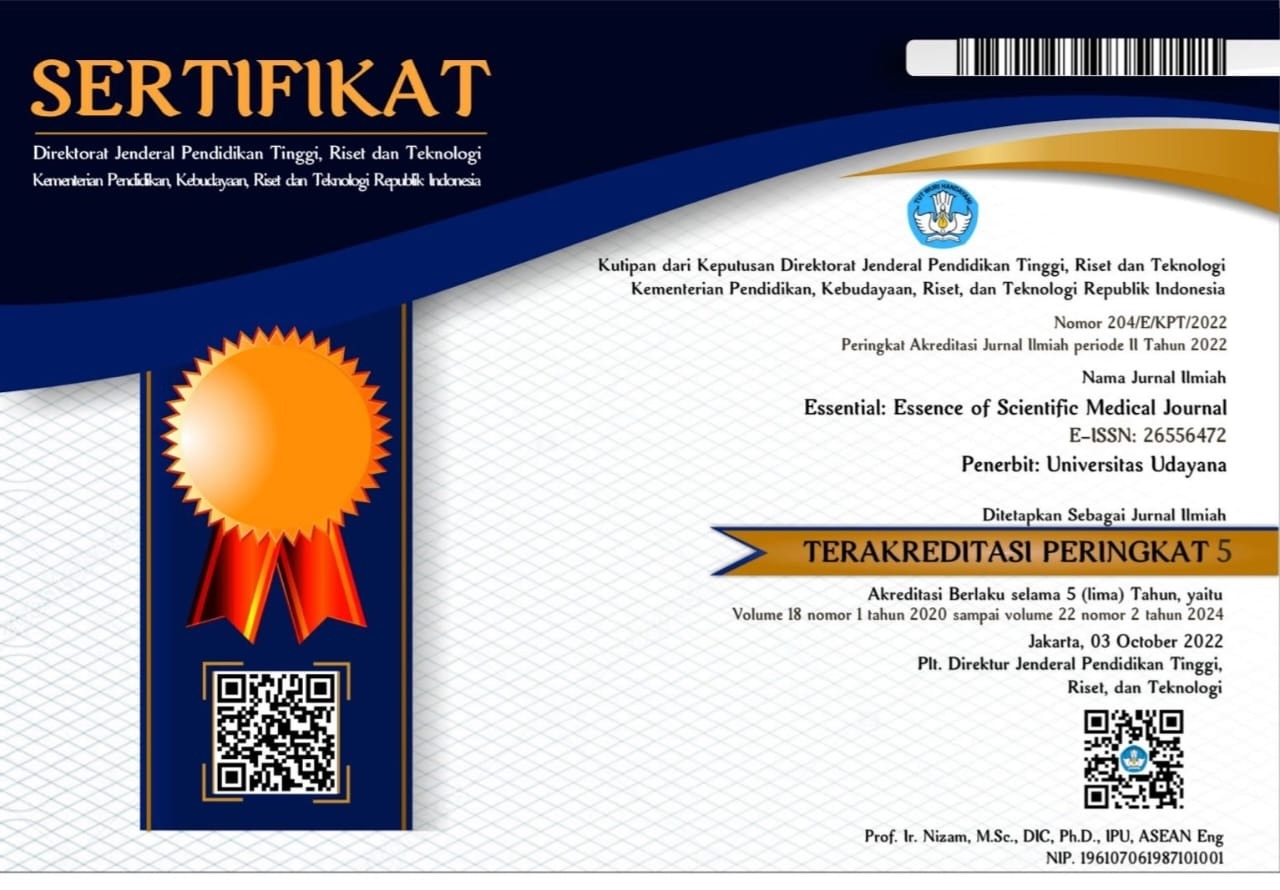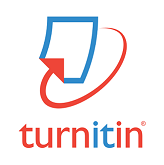Cerek Elektrik Berbasis Flash Heat Treatment: Penerapan Teknologi Praktis Dalam Mencegah Transmisi HIV Dari Ibu Ke Bayi Di Masa Menyusui
Abstract
Introduction: HIV/AIDS is still become a major problem in global health, especially for the women population. HIV-infected women have a greater risk of transmitting HIV to their babies through the Mother to Child Transmission (MTCT) which mostly occurs during breastfeeding. Prevention of MTCT of HIV by replacing exclusive breastfeeding with formula milk is still controversial, considering that breast milk contains antibodies and other protective nutrients that can protect the babies from various infectious diseases. Therefore, the latest effective method is needed to prevent transmission of HIV from mother to child during breastfeeding, namely Flash Heat Treatment (FHT). Discussion: See above the total 30 breast milk samples tested, it was found that the average HIV concentration in breast milk without heating was 8,266 copies/ml with a mean log of 3.45 copies/ml, compared to flash heated milk which shows an almost undetectable level of HIV, which is under 400 copies/ml. This proves that breast milk with a flash heated method can inactivate HIV in breast milk and prevent the transmission of HIV from mother to child during breastfeeding. In addition, the application of FHT in the form of electric kettles can be promising to achieve stabilization and standardization of the use of FHT that is appropriate at the level of housewives. Conclusion: The use of FHT-based electric kettles in breast milk could become an effective and affordable method in preventing HIV transmission from mother to child during breastfeeding, especially in low to middle income countries.
Keywords: electric kettles, FHT, HIV, MTCT
Downloads
References
2. Global AIDS monitoring 2017: indicators for monitoring the 2016 United Nations Political Declaration on HIV and AIDS. Geneva: UNAIDS; 2017 (http://www.unaids.org/sites/default/files/media_asset/2017-Global-AIDS-Monitoring_en.pdf)
3. United Nations Programme on HIV/AIDS (UNAIDS) info. HIV overview. Updated August 2017. Diakses pada 23 desember 2017 pukul 20.58 di laman https://aidsinfo.nih.gov/understanding-hiv-aids/fact-sheets/19/45/hiv-aids--the-basics
4. UNAIDS. Global AIDS Response Progress Reporting. Geneva: (2011).
5. Kourtis, Athena P,. et al. Mother-to-child transmission of HIV-1: timing and implications for prevention. The Lancet infectious diseases 6.11 2006: 726-732.
6. Creek, T., C. Luo, and T. Quick. HIV-exposed children highly affected by deadly outbreak of diarrhea and severe acute malnutrition- Botswana, 2006. Late Breaker Abstract. 2006: 1.
7. World Health Organization. Guidelines on HIV and infant feeding. Principles and recommendations for infant feeding in the context of HIV and a summary of evidence Geneva: World Health Organization. 2010.
8. Yayasan Pelita Ilmu. Jejak dua dekade Yayasan Pelita Ilmu. Jakarta: Yayasan Pelita Ilmu. 2009.
9. Kementerian Kesehatan. Direktorat Jenderal Pengendalian Penyakit dan Penyehatan Lingkungan. Laporan perkembangan situasi HIV dan AIDS di Indonesia Triwulan III. Jakarta: Kementerian Kesehatan. 2014.
10. Departemen Kesehatan. Direktorat Jenderal Pengendalian Penyakit dan Penyehatan Lingkungan. Pedoman nasional pencegahan penularan HIV dari ibu ke bayi. Jakarta: Kementerian Kesehatan Republik Indonesia Direktorat Jenderal Pengendalian Penyakit dan Penyehatan Lingkungan. 2011.
11. Lawrence, Ruth A., and Robert M. Lawrence. Breastfeeding e-book: a guide for the medical professional. Elsevier Health Sciences, 2010.
12. Chantry CJ, Israel-Ballard K et al. Feasibility of using flash-heated breastmilk as an infant feeding option for HIV-exposed, uninfected infants after 6 months of age in urban Tanzania. J Acquir Immune Defic Syndr. 2012 May 1; 60 (1): 43-50.
13. Chantry CJ, Israel-Ballard K et al. Effect of flash-heat treatment on antimicrobial activity of breastmilk. Breastfeed Med. 2011 jun; 6(3): 111.
14. Israel-Ballard K, Abrams BF, et al. Vitamin content of breast milk from HIV-1-infected mothers before and after flash-heat treatment. J Acquir Immune Defic Syndr. 2008 Aug 1; 48 (4): 444.
15. Israel-Ballard K, Volk ML, Hanson CV, Chantry CJ. Inactivation of cell-associated and cell-free HIV-1 by flash-heat treatment of breast milk. J Acquir Immune Defic Syndr. 2010 Apr; 53(5): 656.
16. Suresh, Aneesha, et al. Novel device to conduct flash-heat treatment in efforts to reduce mother- to-child HIV transmission in low-resources areas. Engineering in Medicine and Biology Society (EMBC), 2012 Annual International Conference of the IEEE. IEEE, 2012.


 SUBMISSION
SUBMISSION
















